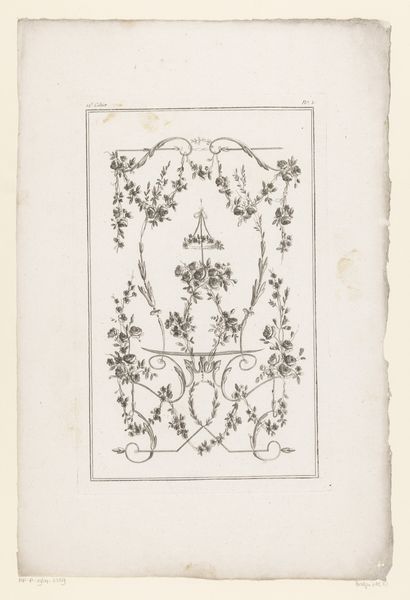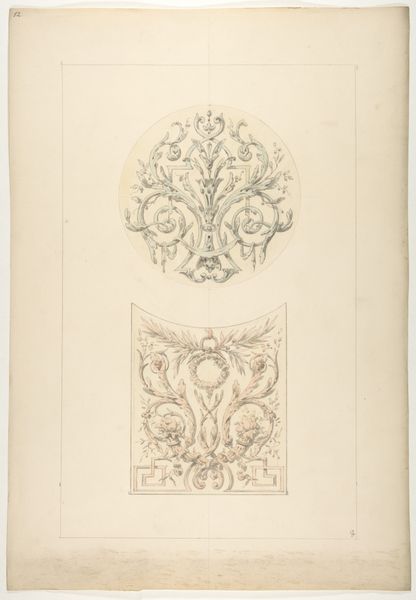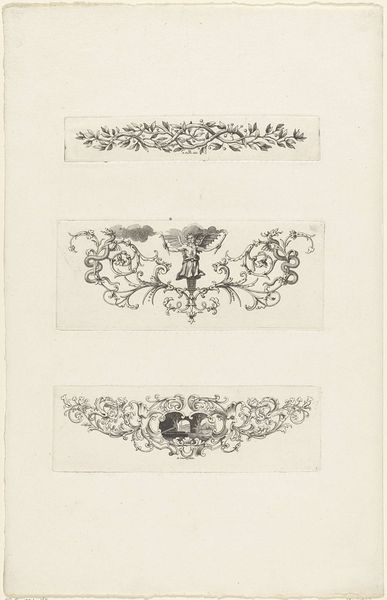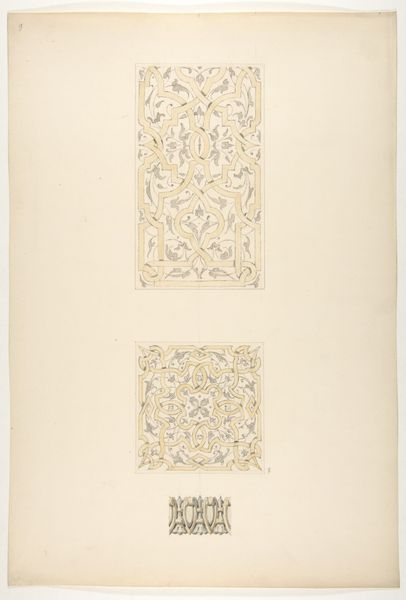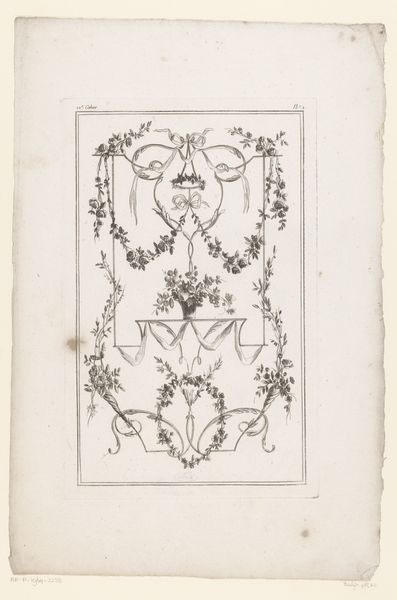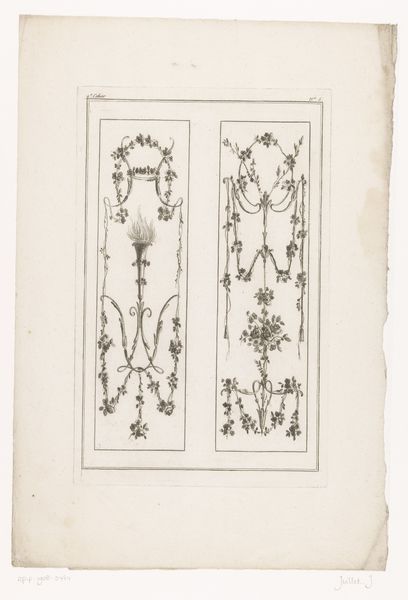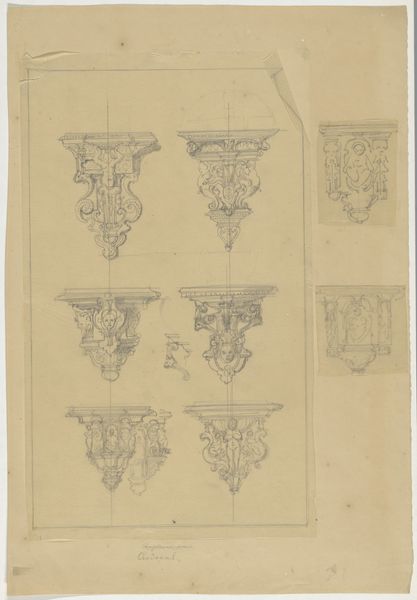
drawing, ink, pen
#
drawing
#
baroque
#
form
#
ink
#
geometric
#
line
#
pen work
#
pen
Dimensions: height 94 mm, width 147 mm, height 95 mm, width 147 mm
Copyright: Rijks Museum: Open Domain
Editor: This pen and ink drawing, "Ornamenten met bloemen, aap en masker," from 1720 to 1730, strikes me as incredibly precise. The detail in these Baroque ornamental designs is captivating. What stands out to you about its production and the hands involved in its making? Curator: Let’s think about this practically. An anonymous drawing like this points to a particular kind of labour, likely a skilled craftsman or a designer working for a larger workshop. These designs served as patterns, shaping not just aesthetics but the actual manufacture of objects, probably furniture, metalwork, or even ceramics. This shifts our focus from the artist's singular genius to the collaborative and often anonymous production processes of the time. Does the material support your own appreciation of the drawings? Editor: It does change my perspective. I was initially drawn to the visual intricacy. But now, understanding it as part of a larger system of production makes me wonder about the social context. How would these designs have been disseminated and used? Curator: Exactly! The distribution of such designs reveals much about the market and consumption patterns. Were these intended for a wealthy patron commissioning custom pieces, or were they part of a larger catalogue for broader use? Consider the economics of ornamentation. Ornament drives value, so it’s deeply rooted in structures of wealth and status. These patterns reflect material values and social ambition in early modern Europe. Who were these designs *for*, and how does their purpose define their making? Editor: So, by understanding the materials and the potential use of these designs, we gain insight into the economic and social conditions that shaped their creation? I hadn't considered that angle. Curator: Precisely. The “Ornamenten met bloemen, aap en masker” aren't just aesthetic exercises. They’re artifacts of labor and consumption. Paying attention to the materials and process demystifies artistic genius and connects art to broader social realities. Editor: Thanks, this helps to situate the artwork. Now I appreciate how much information these lines actually convey.
Comments
No comments
Be the first to comment and join the conversation on the ultimate creative platform.
